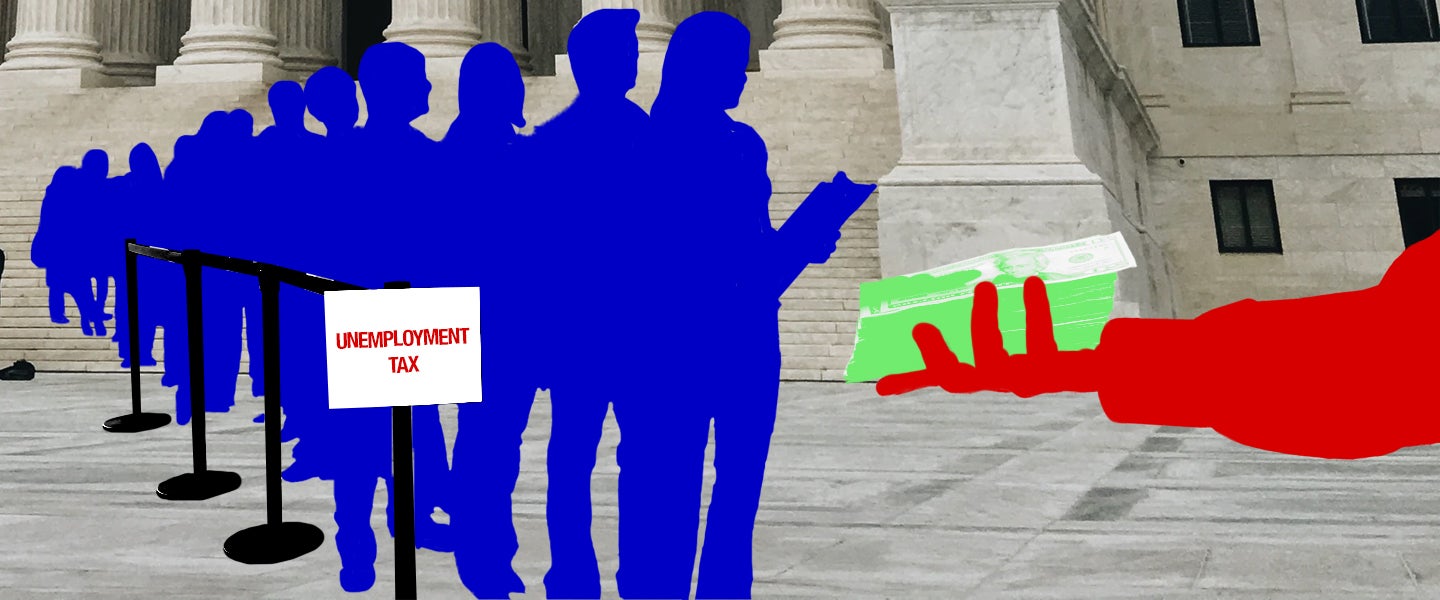While unemployment, underemployment and furloughs are all wildly stressful positions of economic uncertainty, in the short term, unemployment benefits offer a life-saving cash flow. On top of the $600 weekly federal benefit, some people aren’t having their taxes deducted from their checks. Together, that $600 weekly increase and no taxes can make for a pretty decent payment. But how much of that will you end up owing later?
Hold up. I might owe back some of this unemployment? I thought it wasn’t a loan.
Neither your state unemployment or $600 federal unemployment are loans. You’re not required to pay that back. However, it is considered income, and like any other paycheck you might receive, you’re gonna get taxed on it. How much exactly you’ll be taxed depends primarily upon where you live. Some states don’t have an income tax at all, like Florida, and some don’t levy taxes on unemployment, like California. In most states, though, you’ll be taxed according to the local tax rate.
It looks like taxes are already deducted from my unemployment checks. Will I owe further taxes on top of that?
Maybe — it depends on your overall employment situation for the year. If you completed the IRS Form W-4-V upon receiving unemployment benefits, you likely opted to have your state withhold some of your taxes. Even if your state doesn’t take tax from your unemployment themselves, they can still deduct federal taxes from your unemployment if you decide to have them do so to avoid a bill later. It’s still possible that you’ll owe money next spring, though — for some, this federal tax is only deducted from their state unemployment, while others are seeing a cut of the federal benefit $600 taken out of their checks, too. Most people are seeing around 10 percent taken out of one or both of their unemployment checks.
And what if I’m not having taxes deducted from unemployment?
Regardless of whether you’re having taxes deducted now or not, the bigger factor will be what the remainder of your work situation this year ends up looking like. If you end up employed again and take minimal deductions on your traditional W-4 form, the government will likely over-tax you, as they often do. This is why people often end up with fat refund checks for an average of $2,869. So, say you may have ordinarily qualified for some kind of refund: if you decided not to have taxes taken out of your unemployment checks but were later re-employed and had taxes deducted from your traditional paychecks, whatever money you owed from unemployment would be tallied against what might have been a refund. In some cases, you might still have some money owed to you, in others, you might end up owing. It all depends on your holistic financial situation for the year.
So say I’m just unemployed for the whole year. Will I end up owing a fuck-ton of money?
It shouldn’t be atrocious, but it can certainly be a challenging bill to afford — especially after a year of little income. It’s recommended that people receiving unemployment benefits pay quarterly taxes, rather than waiting until the next filing period. This way, you break down your tax payments into four segments rather than owing it all at one time. Regardless, if you received unemployment in 2020, you’ll receive a Form 1099-G next winter that will tell you how much money you received from unemployment and how much you paid in federal taxes from it.
That still all sounds pretty daunting.
Yeah, especially considering unemployment benefits aren’t really designed to leave you any wiggle room for savings. But if you’re able to swing it, it’s definitely smart to have whatever taxes deducted now, and put away whatever you can for what you might owe later. At this point, nobody really knows what’s going to happen with the economy — maybe you won’t end up owing anything at all. Still, it’s never a bad idea to save as much money as you can.
One little ray of sunshine amidst all this is that the $1,200 stimulus checks and $500 checks per child aren’t considered income, and won’t be held against you next tax season (allegedly). So… at least there’s that?

